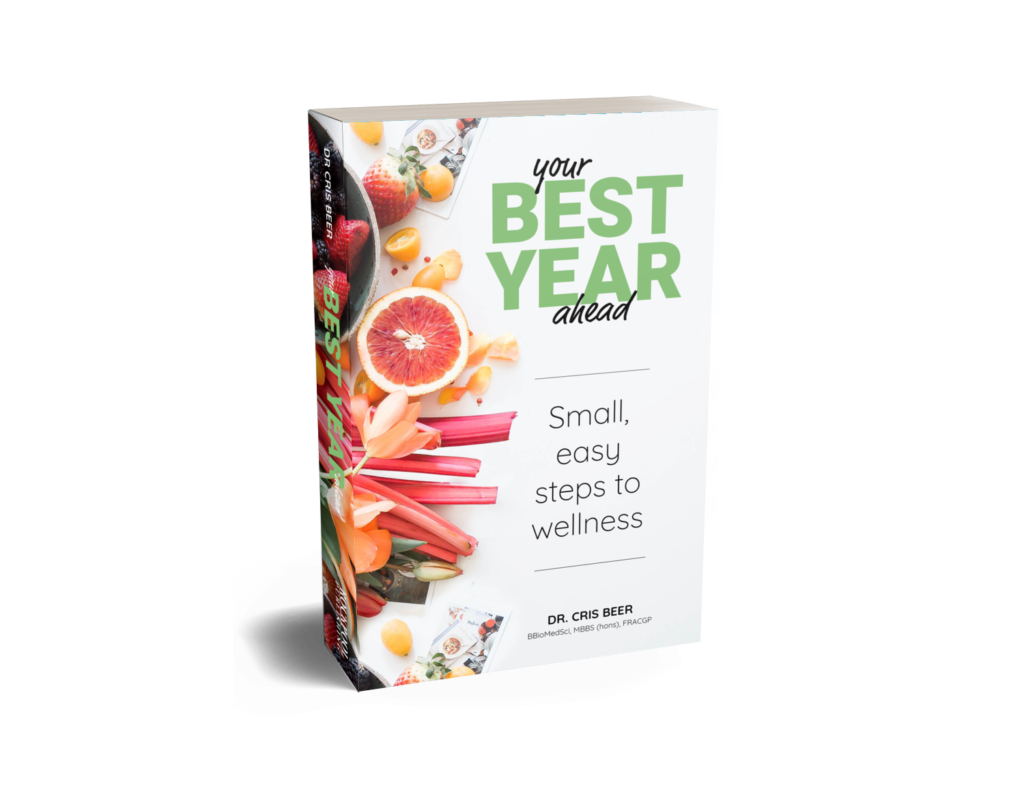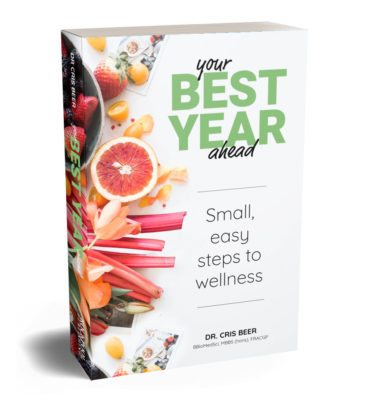Most of us realise we need to eat more fruit and vegetables. What we may not realise is that we also need to eat a variety of different coloured fruits and vegetables daily. Different coloured fruit and vegetables have different nutrients and so variety in our diet is essential for us to get all that our body needs from these foods. Simply eating the same piece of fruit each day and just lettuce on our sandwich does not cut it. Ideally we need to aim to eat a rainbow a day of coloured fruit and vegetables. That is, we need to consume all seven colours of the fruit and vegetable rainbow every day to receive the protection we need from chronic diseases.
People who eat a variety of different coloured fruits and vegetables as part of a healthy diet have reduced risk of chronic diseases including stroke, type 2 diabetes, some types of cancer, heart disease and high blood pressure. This is because fruits and vegetables are coloured differently due to the presence of different phytonutrients, which are powerful antioxidants.
Eating a Rainbow a Day Keeps the Doctor Away
ORANGE FRUITS & VEGETABLES
These are usually coloured by natural plant pigments called ‘carotenoids’. Beta-carotene in sweet potatoes, pumpkins and carrots is converted to vitamin A, which helps maintain healthy mucous membranes and healthy eyes. Scientists have also reported that carotenoid-rich foods can help reduce the risk of cancer and heart disease and can improve immune system function.
Some examples of the orange group include:
- Carrots
- Sweet potatoes
- Apricots
- Mangoes
- Squash
- Sweet corn
- Cantaloupe
- Papayas
- Pumpkin
RED FRUITS AND VEGETABLES
These are coloured by natural plant pigments called ‘lycopene’ or ‘anthocyanins’. Lycopene in tomatoes, watermelon and pink grapefruit, for example, may help reduce the risk of several types of cancer, especially prostate cancer. Lycopene in foods containing cooked tomatoes, such as spaghetti sauce and a small amount of fat are absorbed better than lycopene from raw tomatoes. Anthocyanins in strawberries, raspberries, red grapes and other fruits and vegetables act as powerful antioxidants that protect cells from damage. These are some examples of the red group:
- Red apples
- Red capsicum (peppers)
- Beets
- Pomegranates
- Red cabbage
- Red potatoes
- Cherries
- Radishes
- Cranberries
- Raspberries
- Pink grapefruit
- Rhubarb
- Red grapes
- Strawberries
- Tomatoes
- Watermelon
YELLOW/ORANGE FRUITS
Citrus fruits like oranges, tangerines, lemons, limes and grapefruit are an excellent source of vitamin C and citrus bioflavonoids. Citrus bioflavonoids are a powerful antioxidant that prevents allergies and inflammation and may prevent bruising, haemorrhoids, varicose
veins and spider veins. These are some examples of the yellow/orange group include:
- Oranges
- Yellow grapefruit
- Lemons
- Tangerines/mandarins
- Limes
RED/PURPLE FRUITS AND VEGETABLES
These are coloured by anthocyanins (see above). Anthocyanins in blueberries, grapes and raisins act as powerful antioxidants that protect cells from damage. They may also help reduce risk of cancer, stroke and heart disease. Other studies have shown that eating more blueberries is linked to improved memory function and healthy ageing. These are some examples of the red/purple group:
- Blackberries
- Purple grapes
- Blueberries
- Raisins
- Eggplant
- Prunes
- Figs
- Red wine
- Raspberries
- Red cabbage
- Plums
YELLOW/GREEN FRUITS AND VEGETABLES
These are coloured by a natural plant pigment called ‘chlorophyll’. Some members of the green group, including spinach and other dark leafy greens, green peppers, peas, cucumber and celery, contain lutein. Lutein works with another chemical, zeaxanthin, found in corn, red peppers, oranges, grapes and egg yolks, to help keep eyes healthy. Together, these chemicals may help reduce risk of cataracts and age-related macular degeneration, which can lead to blindness if untreated. Leafy greens such as spinach and broccoli are excellent sources of folate, a B vitamin that helps reduce risk of birth defects. Some examples of the green group include:
- Green apples
- Honeydew melon
- Green grapes
- Artichokes
- Kiwi
- Green cabbage
- Asparagus
- Lettuce
- Spinach
- Avocados
- Limes
- Green pepper
- Green beans
- Green onions
- Cucumbers
- Broccoli
- Peas
- Zucchini
- Brussels sprouts
GREEN VEGETABLES
The ‘indoles’ in the cruciferous vegetables, such as broccoli, cauliflower, cabbage and brussels sprouts, may help protect against some types of cancer including breast, prostate and colon cancer. Examples of green vegetables include:
- Broccoli
- Brussels sprouts
- Cabbage
- Cauliflower
WHITE FRUITS AND VEGETABLES
These are coloured by anthoxanthins (see above). They contain health-promoting chemicals such as allicin, which may help lower cholesterol and blood pressure and may help reduce risk of stomach cancer and heart disease. Some members of the white group, such as bananas and potatoes, are also good sources of the mineral potassium. Some examples of the white group include:
- Bananas
- Onions
- Cauliflower
- Parsnips
- Garlic
- Potatoes
- Ginger
- Turnips
- Mushrooms
Ideally when it comes to fruit-and-vegetable intake we should be aiming to eat at least five serves of vegetables per day and around two serves of fruit per day. Many people eat adequate amounts of fruit but not enough vegetables. Some suggestions for increasing vegetable intake would be to eat a large salad for lunch every day, have a stirfry for dinner, or even hide vegetables in casseroles, bolognaise, lasagnes etc. I even have a patient who includes vegetables like spinach, kale and carrot in homemade muffins and adds cocoa powder to disguise the taste.
If you find that you consistently are missing out on eating, or are even avoiding, a certain group of fruit and/or vegetable consider taking a powdered supplement. These can come as a general fruit/vegetable extract containing concentrated phytonutrients or as a specific coloured powder, usually green, which contains concentrated nutrients from that specific group. Eating the whole fruit or vegetable is always going to be more beneficial but adding a powdered supplement is an acceptable trade-off if you or your child simply cannot stand to eat fruit or vegetables.
Health TIP . . . . . . . . . . . . . . . . . . . . . .
Enjoying a variety of different coloured fruits and vegetables ensures we are getting enough of the necessary micronutrients from our food.
#healthyhabits #healthyliver
Dr Cris
Holistic Medical Doctor, Author ‘Your Best Year Ahead‘, ‘Healthy Habits, 52 Ways to Better Health‘ and Healthy Liver




